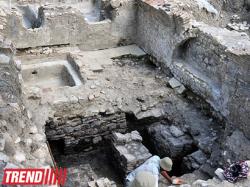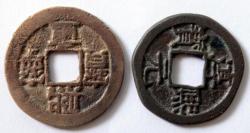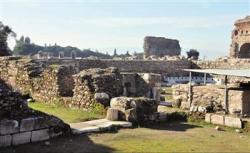INSTITUT SUPERIEUR D'ANTHROPOLOGIE
INSTITUTE OF ANTHROPOLOGY
ONLINE COURSES / COURS A DISTANCE
SPRING TERM : APRIL 2014
REGISTER NOW
AZERBAIDJAN –  Caucase - The first-ever electronic map of monuments on Caucasus archaeology was registered with new hardware created in Azerbaijan, the Academic Secretary of the Department of Humanities and Social Sciences of the Azerbaijani National Academy of Sciences (ANAS), Kamal Abdulla said at a meeting of the board on Feb. 21, ANAS Public Relations Department reported. Work has been conducted on the creation of a link between the exact, social and human sciences, the development of non-oil sector, food security and other issues last year, according to him. The Chairman of Nakhchivan branch of ANAS, academician Ismail Hajiyev noted that, work continued on the study of history, culture and natural resources of Nakhchivan at the branch last year. The department also continued enrichment of the gene pool of cultivated plants and their protection grown in the region.
Caucase - The first-ever electronic map of monuments on Caucasus archaeology was registered with new hardware created in Azerbaijan, the Academic Secretary of the Department of Humanities and Social Sciences of the Azerbaijani National Academy of Sciences (ANAS), Kamal Abdulla said at a meeting of the board on Feb. 21, ANAS Public Relations Department reported. Work has been conducted on the creation of a link between the exact, social and human sciences, the development of non-oil sector, food security and other issues last year, according to him. The Chairman of Nakhchivan branch of ANAS, academician Ismail Hajiyev noted that, work continued on the study of history, culture and natural resources of Nakhchivan at the branch last year. The department also continued enrichment of the gene pool of cultivated plants and their protection grown in the region.
http://en.trend.az/news/society/2244917.html
INDE –  Tangasseri - Suction dredgers, operated to increase the draft of the newly constructed cargo port at the Tangasseri harbour complex here, have uncovered a treasure trove in the seabed. The dredgers have thrown up an amazing array of antique artefacts, including Chinese coins. This has triggered a treasure hunt at the harbour complex. Historians and archaeologists who inspected the site said the artefacts had the potential to tell the story of a bygone India-China link, and even strong trade links with other ancient empires.Sold as scrapBut because of the late arrival of Kerala’s Archaeology Department at the site, a good portion of the treasure has fallen into wrong hands. A man who collected about 11 kg of ancient Chinese coins from the site sold it to a scrap-dealer for a pittance. Efforts by the Archaeology Department officials on Tuesday to retrieve them from the scrap-dealer drew a blank as he had sold them to someone else. But many others living in the vicinity have also collected a good quantity of these artefacts, especially the coins. Although they readily gave a portion of their collection to friends and others till a few weeks ago, they are reluctant now because of rumours that a couple of dealers from Tamil Nadu are prepared to offer a good price for the coins. The hush-hush talk is that these dealers need the coins for the flourishing feng shui market. Ancient Chinese coins are much in demand as feng shui items, since they are seen as “lucky pieces” and symbols of wealth and prosperity. The coins get sucked up by the dredger only when it is operated from a particular area. This has given rise to rumours that the coins were stashed in two or three earthen chests or jars which could have crumbled. There are also reports that following the arrival of the feng shui dealers, technicians are not operating the dredger in the area where the coins are buried. They operate it at night and collect the coins, it is said.Trade linksHistorians say a preliminary examination of the coins showed that they belonged to the Northern Sung, Southern Sung, Chin and Ming dynasties that ruled China from 960 AD to 1644 AD. Historian P.J. Cherian said a clear picture would emerge only after a detailed study. A lot of pottery fragments, mostly of European origin, have also been collected from the site. Kollam was a major port and trading centre of yore, where ships from China, Europe and Arabia used to call mainly for purchasing spices like cardamom and pepper, ivory, teak and indigo. Archaeology Department officials claim that studies show a ship was sent by the Biblical king, Solomon, around 960 BC to Kollam for teak and ivory.
Tangasseri - Suction dredgers, operated to increase the draft of the newly constructed cargo port at the Tangasseri harbour complex here, have uncovered a treasure trove in the seabed. The dredgers have thrown up an amazing array of antique artefacts, including Chinese coins. This has triggered a treasure hunt at the harbour complex. Historians and archaeologists who inspected the site said the artefacts had the potential to tell the story of a bygone India-China link, and even strong trade links with other ancient empires.Sold as scrapBut because of the late arrival of Kerala’s Archaeology Department at the site, a good portion of the treasure has fallen into wrong hands. A man who collected about 11 kg of ancient Chinese coins from the site sold it to a scrap-dealer for a pittance. Efforts by the Archaeology Department officials on Tuesday to retrieve them from the scrap-dealer drew a blank as he had sold them to someone else. But many others living in the vicinity have also collected a good quantity of these artefacts, especially the coins. Although they readily gave a portion of their collection to friends and others till a few weeks ago, they are reluctant now because of rumours that a couple of dealers from Tamil Nadu are prepared to offer a good price for the coins. The hush-hush talk is that these dealers need the coins for the flourishing feng shui market. Ancient Chinese coins are much in demand as feng shui items, since they are seen as “lucky pieces” and symbols of wealth and prosperity. The coins get sucked up by the dredger only when it is operated from a particular area. This has given rise to rumours that the coins were stashed in two or three earthen chests or jars which could have crumbled. There are also reports that following the arrival of the feng shui dealers, technicians are not operating the dredger in the area where the coins are buried. They operate it at night and collect the coins, it is said.Trade linksHistorians say a preliminary examination of the coins showed that they belonged to the Northern Sung, Southern Sung, Chin and Ming dynasties that ruled China from 960 AD to 1644 AD. Historian P.J. Cherian said a clear picture would emerge only after a detailed study. A lot of pottery fragments, mostly of European origin, have also been collected from the site. Kollam was a major port and trading centre of yore, where ships from China, Europe and Arabia used to call mainly for purchasing spices like cardamom and pepper, ivory, teak and indigo. Archaeology Department officials claim that studies show a ship was sent by the Biblical king, Solomon, around 960 BC to Kollam for teak and ivory.
http://www.thehindu.com/news/national/kerala/emergence-of-antiques-triggers-treasure-hunt-in-kollam/article5711850.ece
TURQUIE –  Tralleis -Robbed of its place in the annals of history by a series of earthquakes, the ancient city of Tralleis is set to regain some of its former glory with a number of restorations that are expected to bring in tourists. “A structure which formed the entrance gate of the gymnasium building, and which became the symbol of Aydın, suffered the heaviest damage due to earthquakes,” said Aydın Culture and Tourism Director Nuri Aktakka. “As part of a project, it will be strengthened and illuminated so that it will even be seen from the entrance of the city. Also, restorations have been continuing to revive a columned road that was discovered in Tralleis. The ancient city will become a place worth a visit within a year.”The scientific consultant for the excavations, Adnan Menderes University (ADU) Archaeology Department Professor Aslı Saraçoğlu said the restoration work in the ancient city focused on the ancient road, as it had been severely damaged by earthquakes. “We know Tralleis was damaged by earthquakes in the ancient age. The columned street in the city is one of the quake-hit areas. A number of columns have been revealed and restoration has begun. The ancient road, which has Roman-era stores in front of it, will be restored with all of its components,” she said. Saraçoğlu also said they had unearthed various artifacts reflecting the traditions of the era, such as ceramics, mosaics and reliefs.
Tralleis -Robbed of its place in the annals of history by a series of earthquakes, the ancient city of Tralleis is set to regain some of its former glory with a number of restorations that are expected to bring in tourists. “A structure which formed the entrance gate of the gymnasium building, and which became the symbol of Aydın, suffered the heaviest damage due to earthquakes,” said Aydın Culture and Tourism Director Nuri Aktakka. “As part of a project, it will be strengthened and illuminated so that it will even be seen from the entrance of the city. Also, restorations have been continuing to revive a columned road that was discovered in Tralleis. The ancient city will become a place worth a visit within a year.”The scientific consultant for the excavations, Adnan Menderes University (ADU) Archaeology Department Professor Aslı Saraçoğlu said the restoration work in the ancient city focused on the ancient road, as it had been severely damaged by earthquakes. “We know Tralleis was damaged by earthquakes in the ancient age. The columned street in the city is one of the quake-hit areas. A number of columns have been revealed and restoration has begun. The ancient road, which has Roman-era stores in front of it, will be restored with all of its components,” she said. Saraçoğlu also said they had unearthed various artifacts reflecting the traditions of the era, such as ceramics, mosaics and reliefs.
http://www.hurriyetdailynews.com/quake-hit-ancient-city-of-tralleis-being-restored.aspx?pageID=238&nID=62733&NewsCatID=375
ROYAUME UNI –Wanborough - Melanie Pomery-Killinger, chief archaeologist at Wiltshire Council, said the work is now nearing completion.:There have been some very interesting finds coming out, dating from the Roman period,” she said. “We suspect there was Roman settlement on the site.Recently the remains of a skeleton were found in a shallow grave. There is no coffin, only a body in a dug grave.It appears quite interesting because it has been decapitated, and the skull was found behind the knee.That is normally done when someone is a criminal or miscreant of some kind.“The features we have found on site suggest this was not at the heart of the settlement. Normally people would be brought out of the settlement and buried by the road if they had done something wrong. The settlement proper would have been further up the hill.We have known Wanborough is very interesting for some time. We already know about a small Roman town which is currently intersected by the A419, and there was a big Roman presence there throughout the 4th century AD.“What we have here is a small farming community with some industrial activity. We have also found earlier pottery dating back to the 1st and 2nd centuries AD, so the indication is there was another settlement nearby.They were in relatively good condition, and were found around 30 to 50cms below the ground surface layout. While most features have been shallow, there are also deeper features such as ditches which indicates this was an area outside the main settlement.”
http://www.swindonadvertiser.co.uk/news/11026391._/?